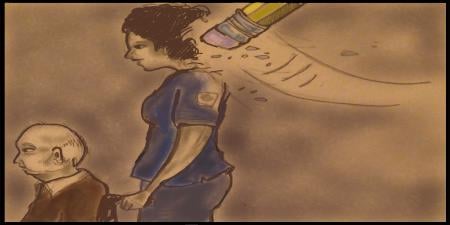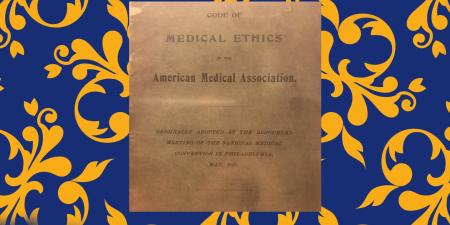Abstract
Health care workers earning low wages in the United States are positioned squarely at the intersection of class, race, gender, and migration fault lines. Commitment to health equity demands higher pay, improved benefits, and more workplace protections for these workers. Clinicians with higher status jobs must help dismantle stratifications created by racist, sexist, and classist histories of exclusion. Health equity is impossible without systemic and organizational responses to the needs of members of the health care workforce with low wages.
Intersecting Inequities in Low-Wage Health Care Work
The largest segment of health care—and the one that will add the most jobs—is long-term care for elderly adults with disabilities who live in private homes, assisted living communities, and institutions.1 Direct care occupations—home health aides, residential care aides, and nursing assistants in nursing homes—make up the bulk of this workforce. Between 2010 and 2020, nearly 1.5 million jobs were added to direct care, and this growth is expected to continue into the future.1
This low-wage health care workforce in the United States sits squarely at the intersection of the fault lines of gender, race, and immigration, as well as class. These jobs are overwhelmingly held by women, who, in 2019, made up 91% of nursing assistants, 86% of home health aides, and 81% of residential care aides.1 People of color, who make up 39% of the labor force in the United States, are heavily concentrated in direct care occupations: in 2019, 58% of nursing assistants, 63% of home health aides, and 52% of residential care aides were identified in US Census Bureau data as Black/African American, Hispanic/Latino, Asian/Pacific Islander, or other.1 Immigrant workers are also overrepresented, constituting 31% of home health aides and 21% of nursing assistants and residential care aides but only 17% of the total labor force in 2019.1 Within hospitals, low-wage direct care jobs are similarly dominated by women and people of color. In 2019, nursing assistants in hospitals were 86% women, 55% people of color, and 23% immigrant workers.2
There are also large groups of cleaning and food preparation workers earning low wages who are often not considered health care workers but who are vital to the work of hospitals and long-term care institutions. These health care support occupations are not as heavily feminized as direct care work: for example, women make up 59% of cleaning workers in hospitals.2 However, these jobs are among the most racialized in the sector, as 76% of cleaning workers in hospitals are people of color and 30% are immigrant workers.2 We must take these support workers into account when thinking about how to promote racial equity in the health care sector.3,4
A commitment to health equity demands attention to these groups of workers, both as patients and as integral to the stratified modern medical enterprise, by dismantling stratifications created by racist, sexist, and classist histories of exclusion.
Health Workers Are Patients
In May 2021, the American Medical Association (AMA) released a strategic plan to dismantle structural racism and eliminate inequities in the health of patients.5 At the risk of stating the obvious, the heavily racialized low-wage workforce within health care organizations are patients, too. Inadequate wages and unsafe working conditions in low-wage health care therefore create and reproduce health inequities by gender, race, and class, and addressing those injustices will require improving these jobs.
Wages in these segments of health care leave many workers living in poverty or in near-poverty conditions. The median hourly wage for direct care workers in 2020 was $13.56, and their median annual earnings were just $20 200.1 In fact, 45% of direct care workers rely on some form of public assistance, including Medicaid for health insurance.1 Among Black and Latina female direct care workers specifically, about 50% earned less than $15 per hour.6 Maids and housekeeping cleaners in health care settings similarly earn low wages, averaging $32 000 a year in hospitals and $26 310 in nursing homes in 2020.7 Socioeconomic status is a powerful predictor of disease and mortality, and living in poverty puts individuals at substantially higher risk for chronic disease, injury, and early death.8
Through professionalization, medicine became highly credentialed, culturally associated with technical skills and scientific knowledge, and dominated by White men.
In addition to experiencing poverty, low-wage health care workers are exposed to a range of other risks: biological agents such as viruses, toxic chemicals used in cleaning and sanitizing, heavy lifting of equipment and patients, physical and verbal assault, and high-stress conditions, including long hours and night-shift work.9 Nursing assistants are more than 3 times as likely to experience workplace injuries than the typical US worker.1 Attaining health equity requires mitigating the health risks of poverty and hazardous working conditions for this highly feminized and racialized group of workers within the health care sector.
“This Bridge Called My Back”10
From an ethical perspective, there is a related and perhaps even more compelling reason why medical professionals and health care organizations must confront stratification in the health care workforce as an equity issue. The economic status and social power of doctors and other medical professionals was built on exclusionary practices and racist and sexist cultural narratives. To borrow a phrase from the pathbreaking feminist anthology by Cherríe Moraga and Gloria Anzaldúa, women of color have long been forced to be the bridge to power and resources for other groups.10 Health care workers earning low wages have been that bridge for medical professionals. Thus, a commitment to health equity requires examination of occupational stratifications created by histories of exclusion, reenvisioning the interrelationship of jobs within the health care sector, and addressing the cultural biases and structural inequities that persist.
While women were the primary caregivers for the ill in preindustrial times, the professionalization of medicine in the United States that began in the late 19th century systematically excluded women as physician jobs grew in number and prestige.11 African Americans were also effectively barred from medical schools, residency programs, hospital staffs, and professional organizations (including the AMA).12 The process of professionalization has been described as one of social closure, whereby members of an occupation erect barriers to entry in the form of education, credentialing, licensing, or membership requirements.13 This process raises the social and economic rewards of the job in 2 related ways. First, there is a structural impact by restricting labor supply and enhancing demand. Second, there are “signaling” consequences, as professionals carve out a singular claim to expertise and quality service delivery.13
Physicians are widely considered the archetype of successful professionalization, a process led in large part by the AMA. Early physician advocates effectively erected barriers to entry through the development of extensive licensing requirements and moving medical education from an apprenticeship model to one embedded in formal educational structures. Through this process, medicine became highly credentialed, culturally associated with technical skills and scientific knowledge, and dominated by White men.14
White women activists, looking for opportunities for employment for daughters of middle-class families, carved out the niche of trained nursing as a “feminine” domain by focusing rhetorically on the moral and spiritual caring aspects of the job (despite the reality of hard physical labor for many nurses at that time).15 Although Amitai Etzioni argued in the 1969 that nursing had not fully achieved professional status (he called a semi-profession),16 trained nursing did establish some level of social closure through credentialing and education requirements. However, Black women (and other women of color) were essentially excluded from professional nursing well into the 1960s.17 In the professionalization of both medicine and nursing, structural exclusion was complemented by cultural constructions of the nature of the job that emphasized certain characteristics, signaled expertise, and relegated other work to jobs identified as lower status.
The health care workers earning low wages whose numbers have expanded dramatically throughout the course of the 20th century and into the 21st century perform the labor excluded by the construction of doctors’ and nurses’ professional expertise: direct care for older, disabled, and ill bodies, as well as cleaning and food preparation and serving in hospitals and long-term care institutions. Scholars note that, throughout US history, a racialized division of labor channeled White women to become masters of the emotional, more performative aspects of care work, whereas women of color and immigrant women were forced to engage in more invisible “backroom” and physically intensive tasks.18,19,20 The association of the “dirty work” of care with women of color has its roots as far back as slavery. In the context of slavery, White women of means were the hostesses and mistresses of the home, while Black enslaved women often did the backbreaking and never-ending work of cleaning houses and outhouses, laundering and maintaining clothing, and procuring, preparing, and serving food. Domestic servitude in the North in the pre-Civil War era mirrored this gendered and racialized division of care labor, despite the different economic structure, and women of color and immigrant women were heavily overrepresented in the expanding ranks of domestic servants across the nation in the second half of the 19th century.18,19,20
The structure of modern medicine was built on the backs of women of color performing the dirty work of health care for poverty-level wages. It is important to note that this stratification in health care has benefited not only higher status workers but also the health care organizations that drove this stratification. As Susan Reverby has noted in her history of nursing, it was in hospitals’ economic interests to maintain a “divided and cheap” workforce.15 Higher status health care workers, health care organizations, and professional associations have created and benefited from racialized stratification. If equity is the goal, this history creates an ethical imperative for the medical establishment to dismantle a system that places women of color in unsustainable jobs.
Building Better Health Care for All
The goal of health equity therefore requires us to address the poverty-level wages and high-risk working conditions faced by the women of color who perform the lowest wage jobs in the health care sector. In the short term, all workers must be offered living wages and basic benefits, including health insurance and access to paid leave. In the long term, the restructuring of health care will require a transformation of health care financing and insurance provision to emphasize adequately funded public investment. And, ultimately, attaining health equity will require revaluing all health care work and dismantling racist and sexist divisions of labor.
References
-
PHI. Direct care workers in the United States: key facts. September 2021. Accessed November 18, 2021. https://www.phinational.org/wp-content/uploads/2021/09/Direct-Care-Workers-in-the-US-2021-PHI.pdf
-
Ruggles S, Flood S, Foster S, et al. IPUMS USA: version 11.0. IPUMS; 2021.
-
Armstrong P, Armstrong H, Scott-Dixon K. Critical to Care: The Invisible Women in Health Services. University of Toronto Press; 2008.
- Duffy M. Doing the dirty work: gender, race, and reproductive labor in historical perspective. Gend Soc. 2007;21(3):313-336.
-
AMA releases plan dedicated to embedding racial justice and advancing health equity. News release. American Medical Association; May 11, 2021. Accessed November 1, 2021. https://www.ama-assn.org/press-center/press-releases/ama-releases-plan-dedicated-embedding-racial-justice-and-advancing
- Himmelstein KEW, Venkataramani AS. Economic vulnerability among US female health care workers: potential impact of a $15-per-hour minimum wage. Am J Public Health. 2019;109(2):198-205.
-
Occupational employment and wages, May 2020, 37-2012 maids and housekeeping cleaners. US Bureau of Labor Statistics. Accessed February 1, 2022. https://www.bls.gov/oes/current/oes372012.htm#
-
Conway C. Poor health: when poverty becomes disease. UCSF Mag. Fall 2015. Accessed November 1, 2021. https://www.ucsf.edu/news/2016/01/401251/poor-health-when-poverty-becomes-disease
-
Kurowski A, Boyer J, Punnett L. The health hazards of health care: physical and psychosocial stressors in paid care work. In: Duffy M, Armenia A, Stacey CL, eds. Caring on the Clock: The Complexities and Contradictions of Paid Care Work. Rutgers University Press; 2015:83-93.
-
Moraga C, Anzaldúa G. This Bridge Called My Back: Writings by Radical Women of Color. Persephone Press; 1981.
-
Ehrenreich B, English D. Witches, Midwives, and Nurses: A History of Women Healers. 2nd ed. Feminist Press; 2010.
- Baker RB, Washington HA, Olakanmi O, et al. African American physicians and organized medicine, 1846-1968: origins of a racial divide. JAMA. 2008;300(3):306-313.
- Weeden KA. Why do some occupations pay more than others? Social closure and earnings inequality in the United States. Am J Sociol. 2002;108(1):55-101.
-
Starr P. The Social Transformation of American Medicine: The Rise of a Sovereign Profession and the Making of a Vast Industry. Basic Books; 2017.
-
Reverby SM. Ordered to Care: The Dilemma of American Nursing, 1850-1945. Cambridge University Press; 1987.
-
Etzioni A, ed. The Semi-Professions and Their Organizations: Teachers, Nurses, Social Workers. Free Press; 1969.
-
Hine DC. Black Women in White: Racial Conflict and Cooperation in the Nursing Profession, 1890-1950. Indiana University Press; 2020.
- Glenn EN. From servitude to service work: historical continuities in the racial division of paid reproductive labor. Signs. 1992;18(1):1-43.
-
Roberts DE. Spiritual and menial housework. Yale J Law Fem. 1997;9:51-80.
-
Duffy M. Making Care Count: A Century of Gender, Race, and Paid Care Work. Rutgers University Press; 2011.



